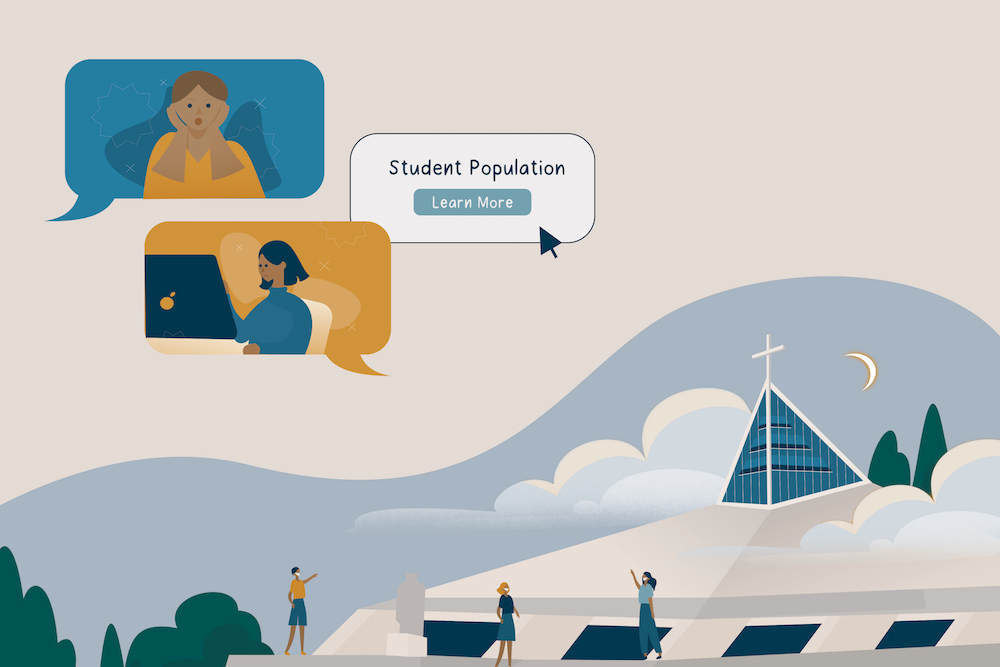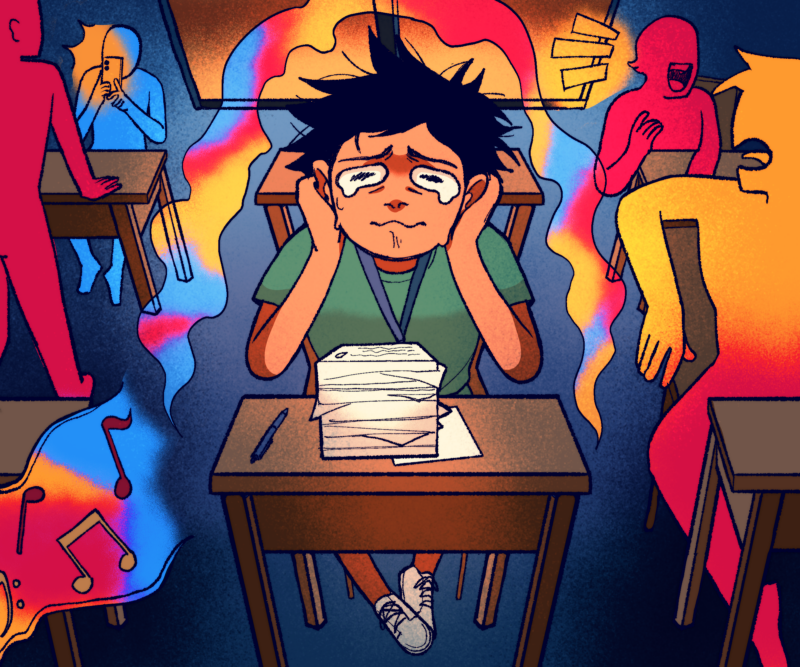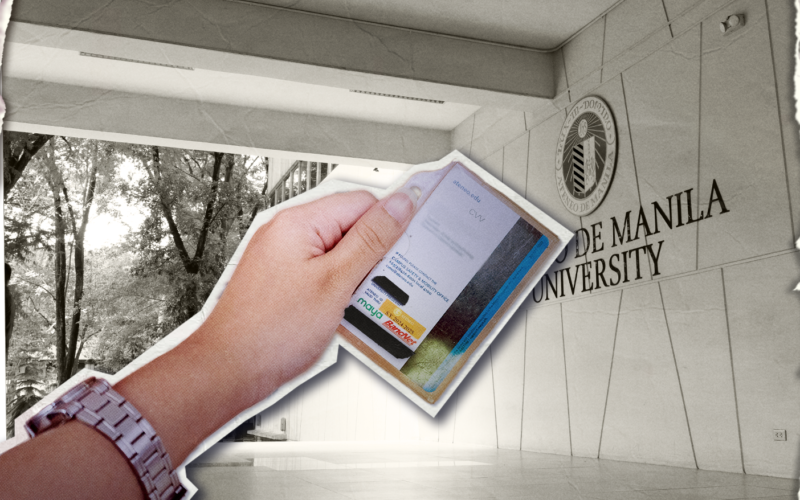WITH A 25% nationwide drop in basic education enrollees, an abrupt unemployment rise, and the imperative transition to online classes, Ateneo continues to adjust to the new precedent set by the COVID-19 pandemic.
Amid these unprecedented changes, students confront persisting financial and health difficulties. The pandemic debilitated the Philippine economy, leaving thousands with little to no job security and financial support. Thus, financially sustaining one’s education became even more burdensome for all students. Scholars, however, might find themselves at a higher risk.
Scholarly woes
Freshman scholar Claire Pillos says that her scholarship helped ease her family’s financial burden. She shares that her father still physically goes to work despite health risks in order to provide for her and her sister who is still studying.
Pilos’ concerns are not isolated, as some students are similarly unable to continue with their studies completely despite their scholarships. Sophomore scholar Sophia Ruiz says that she knows students who are considering taking a leave of absence (LOA) due to financial struggles. “They have to support their families [because] a lot of their parents lost their jobs during the pandemic,” she shares. Office of Admission and Aid (OAA) Director Jose Maria Edito K. Tirol, PhD confirms that there are a number of scholars who have taken a LOA.
Another financial concern is having the devices and stable internet connection needed for online learning, as not all students can afford these additional expenses. Ateneo Gabay President Jubert Calamba explains how additional expenses for internet or mobile data could be harder for scholars whose parents lost their jobs. “Nagiging mabigat talaga [internet expenses] (Internet expenses are becoming hard to bear) on the side of the scholar,” he says.
Personal study space is also a source of unease—Pillos says that she was worried about finding a comfortable place at home where she could focus on her studies. In addition, students, particularly in rural areas, may face uncontrollable external factors such as weak connectivity throughout the semester. “[Unstable internet connection] cost me a lot of trouble during the first quarter […] it continues to persist even during finals season,” says Ruiz, who resides in the province.
Tirol explains that troubles with work spaces at home are commonplace among scholars. “For many scholars, it’s easier to study on-campus [because] the computers are there, the internet is there, the WiFi is there. [Especially in] provinces where their wifi’s really bad,” he says.
Crucial investments
Amid these challenges that scholars face, The GUIDON’s research notes a significant increase in scholars this AY. According to Tirol, the administration increased scholarship grantees and coverage while also providing resources according to those in need.
The increase in scholar population is coupled with a significant spike in the LS student population. In fact, AY 2020-2021 saw the most number of students compared to previous years, with 9,346 students currently enrolled in the LS.
Tirol mentions that Ateneo’s decision to end AY 2019-2020 on May 8, mass promote, and refund tuition fees created good public relations for the University. Tirol adds that prospective transferees have already inquired more about Ateneo.
It is important to remember that the student population will bear an impact on the University’s budget, as various measures have already been taken to manage the finances. For example, Tirol states that a hiring freeze was implemented, while work promotions and wage rises were temporarily halted. This new policy allowed the OAA to retain its current employee plantilla. In addition, Vice President for the Loyola Schools Maria Luz Vilches, PhD mentions that funds for major improvements such as building enhancement projects were cut.
Moreover, Tirol notes that it is the OAA’s mandate to properly allocate funds for scholars. Despite this, the pandemic created an influx of scholarship requests that the fund could not handle. Since the OAA did not want to turn down these requests, the office communicated with Vilches on two separate occasions to increase the budget allocated for scholarships, as well as cover students and scholars who were waitlisted and appealing. Tirol explains that alumni and corporation donors would typically sustain their funding, but this year’s circumstances required OAA to further coordinate with Vilches to maximize the funding for scholarships.
Vital synergy
To better address the scholars’ financial concerns, Ateneo Gabay and OAA also collaborate to address these. However, Calamba describes the relationship between the two as “complicated” and “half-baked.” He attributes this to two factors: The first being that Ateneo Gabay is not the home organization of scholars—rather, it “serves” scholars. The second is that the OAA, as an administrative office, cannot have an inclination towards a specific student organization.
Nevertheless, the OAA and Ateneo Gabay have cooperated on a number of projects in the wake of the recent typhoons. To illustrate, constituency checks were released to the scholar population through both the OAA and Ateneo Gabay.
Tirol notes that their office ordered 50 devices for scholars last November. Through scholarship funds, the OAA is also planning on providing additional allowances for scholars most affected by the typhoon. “This additional allowance [will be] apart from whatever allowance we are already giving [scholars],” he explains.
Additionally, Calamba states that the scholar sector received a Php 40,000 internet load subsidy from the Sanggunian for students in need of internet subsidization. However, Calamba emphasized that not all students will be able to receive the subsidy due to limitations in funding. “We don’t even think na baka sumobra sa 50 yung mga magiging recipients nung internet load subsidy,” he says. (We don’t think that the recipients of the internet load subsidy will exceed 50 people.)
Uncertain tides
The OAA fears that calamities as strong as Typhoons Rolly or Ulysses may compromise the added allowances. Aside from financial obstacles, Tirol is also concerned about the mental well-being of students amid online learning. “The longer online learning continues, the more difficult it may be for OAA to deal with the total hells of our scholars,” he added.
Despite budget constraints, the scholar population is now at its highest since AY 2015-2016. With a growing number of new scholars, Calamba reiterates that Ateneo Gabay can offer assistance. Their support group is now open to collegiate scholars of all levels. “In-adapt namin lahat ng previous projects namin for scholars to online setup,” he says. (We’ve adapted all our projects for the scholars into the online setting.)
Even with the community’s collective effort, Ateneo is still grappling with persistent financial and health difficulties for students. Both the students and the administration must grapple with the deluge of external adversities that impact the University’s financial sustainability but more importantly, they must do so as a united community.







